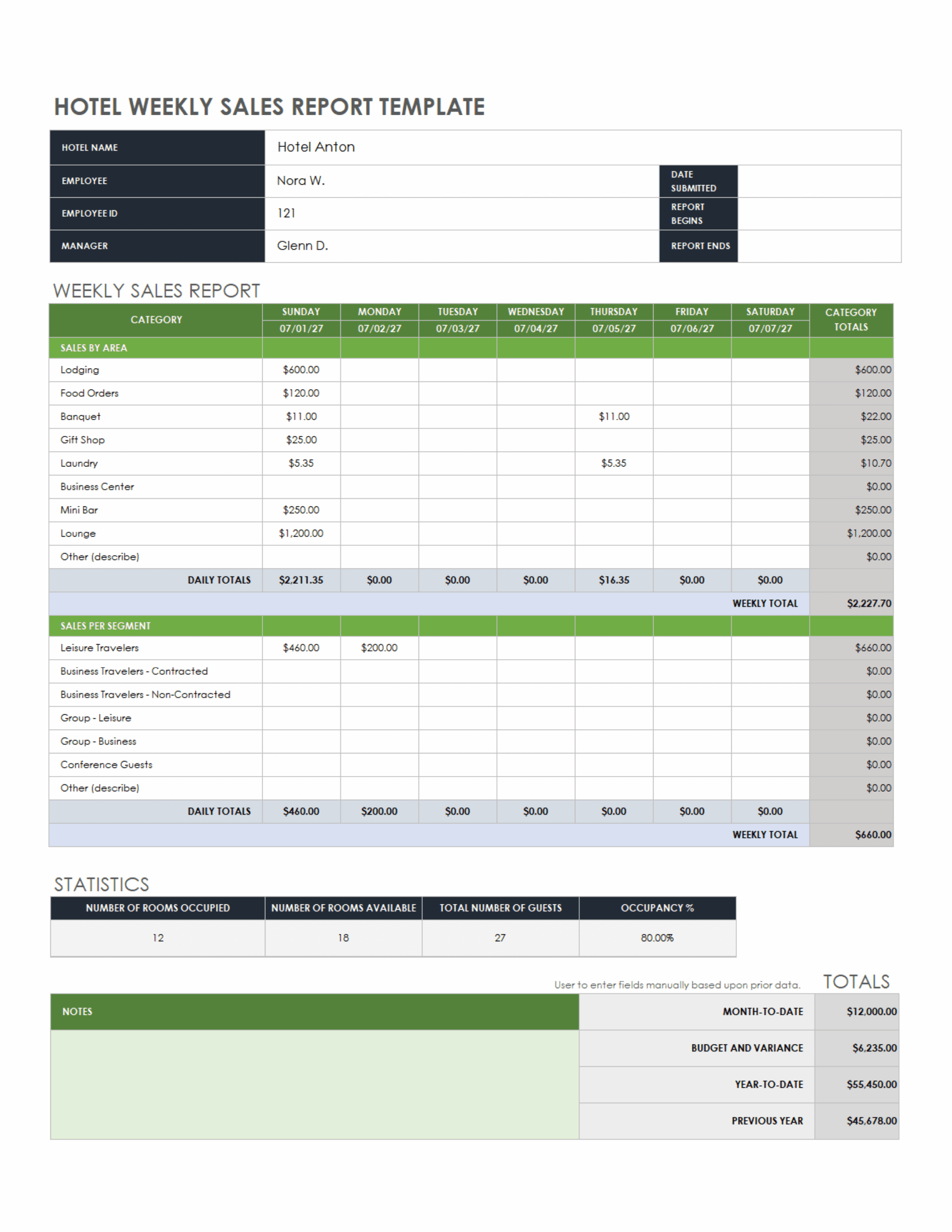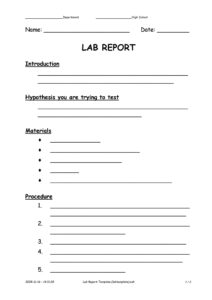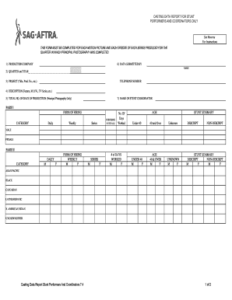Hotels are dynamic environments, constantly responding to market shifts, guest preferences, and seasonal demands. To stay competitive and drive profitability, understanding your sales performance isn’t just a good idea; it’s absolutely essential. Tracking what’s working and what isn’t allows you to make informed decisions that directly impact your bottom line.
Imagine having a clear, concise snapshot of your weekly revenue, occupancy rates, and sales activities, all neatly organized and easy to digest. That’s the power a dedicated weekly sales report brings to your hotel operations. It transforms raw data into actionable insights, helping you spot trends, identify areas for improvement, and celebrate successes.

But creating such a report from scratch every week can be time-consuming and prone to inconsistencies. This is where a robust hotel weekly sales report template becomes an invaluable asset. It provides a standardized framework, ensuring all critical data points are captured consistently, week after week, making analysis and comparison a breeze.
Key Elements of an Effective Hotel Weekly Sales Report Template
A truly effective hotel weekly sales report template goes beyond simply listing numbers. It’s a comprehensive tool designed to provide a holistic view of your property’s commercial health. It should be structured in a way that allows various departments, from front office to revenue management and sales, to quickly grasp relevant information and contribute to a unified strategy. Think of it as your hotel’s weekly financial and operational heartbeat monitor.
Such a template empowers management teams to evaluate past performance against current targets and future forecasts. It helps pinpoint specific successes, like a particularly strong group booking period or a successful marketing campaign, as well as areas needing immediate attention, such as dips in occupancy or underperforming revenue streams. Without this structured approach, critical insights can easily get lost in a sea of raw data.
To ensure your report delivers maximum value, it needs to cover several key performance indicators (KPIs) and operational aspects. These sections are the backbone of any reliable sales analysis, offering a detailed look into the various facets that contribute to your hotel’s overall revenue generation.
Essential Sections to Include
- Overall Revenue Performance: This breaks down revenue by source, including room revenue, food and beverage, spa, meeting spaces, and other ancillary services. It gives you a clear picture of where your money is truly coming from.
- Occupancy Rates: A fundamental metric showing how many of your available rooms were sold, often compared to the same period last year or budget.
- Average Daily Rate (ADR): The average price guests paid per occupied room. This metric is crucial for understanding pricing strategies.
- Revenue Per Available Room (RevPAR): Considered by many to be the most important hotel KPI, RevPAR combines occupancy and ADR to give a true measure of a hotel’s ability to fill its rooms at the best possible price.
- Sales Activities and Leads: A summary of sales team efforts, including new inquiries, converted leads, site visits, and progress on major accounts or group bookings.
- Marketing Campaign Performance: Details on ongoing marketing initiatives, their reach, engagement, and direct impact on bookings or inquiries.
- Forecast vs. Actuals: A vital comparison of your projected sales and revenue against what you actually achieved, highlighting forecasting accuracy and potential variances.
- Competitive Analysis Summary: A brief overview of how your hotel performed against key competitors in terms of occupancy and ADR, providing context for your results.
By meticulously populating these sections within your hotel weekly sales report template, you build a robust dataset over time. This historical information becomes invaluable for identifying long-term trends, understanding seasonality, and refining your business strategies for peak performance. It’s not just about current performance; it’s about predicting and shaping future success.
Remember, while a template provides structure, it should also be flexible enough to incorporate specific metrics unique to your property or market. Customization ensures the report remains relevant and maximally useful to your specific operational context.
Making the Most of Your Hotel Weekly Sales Report Template
Possessing a well-designed hotel weekly sales report template is only half the battle; the real magic happens in its consistent and insightful application. The first step is to establish clear protocols for data collection. Who is responsible for gathering specific information, and when is it due? Accuracy is paramount, as even small errors can lead to misleading conclusions and potentially flawed decisions. Encourage thoroughness and cross-referencing to maintain data integrity.
Once the report is compiled, it shouldn’t just sit in an email inbox. Schedule regular, perhaps weekly, meetings with key stakeholders—your General Manager, Revenue Manager, Sales Director, and even Department Heads from F&B or Spa, if their revenue is significant. Use this time not just to review numbers, but to discuss the ‘why’ behind them. Why was ADR up? What caused the dip in spa revenue? What opportunities are emerging?
These discussions should culminate in actionable insights and clear next steps. For instance, if a marketing campaign is underperforming, the team might decide to reallocate budget or adjust messaging. If a particular segment is booming, it could warrant increased focus and resources. The report serves as a living document that guides strategy, helps identify bottlenecks, and ensures everyone is aligned with the hotel’s commercial goals.
- Consistent Data Input: Ensure all departments understand their roles in providing accurate and timely data for the report.
- Regular Review Meetings: Make these meetings a non-negotiable part of your weekly schedule, focusing on analysis and discussion, not just presentation.
- Actionable Insights: Translate numbers into clear strategies and assign responsibilities for follow-up actions.
- Trend Identification: Look beyond the immediate week to identify patterns, seasonality, and long-term changes in market behavior.
- Performance Benchmarking: Regularly compare your results against previous periods, budgets, and competitive sets to gauge true performance.
Embracing a systematic approach to sales reporting through a tailored template is a transformative step for any hotel. It elevates your understanding of market dynamics, internal performance, and future potential. This commitment to data-driven decision-making not only streamlines operations but also fosters a culture of accountability and continuous improvement throughout your property.
Ultimately, a consistently utilized and thoughtfully analyzed weekly sales report empowers your team to navigate the competitive hospitality landscape with confidence. It allows you to respond proactively to challenges, capitalize on opportunities, and steadily steer your hotel toward sustained growth and profitability.



